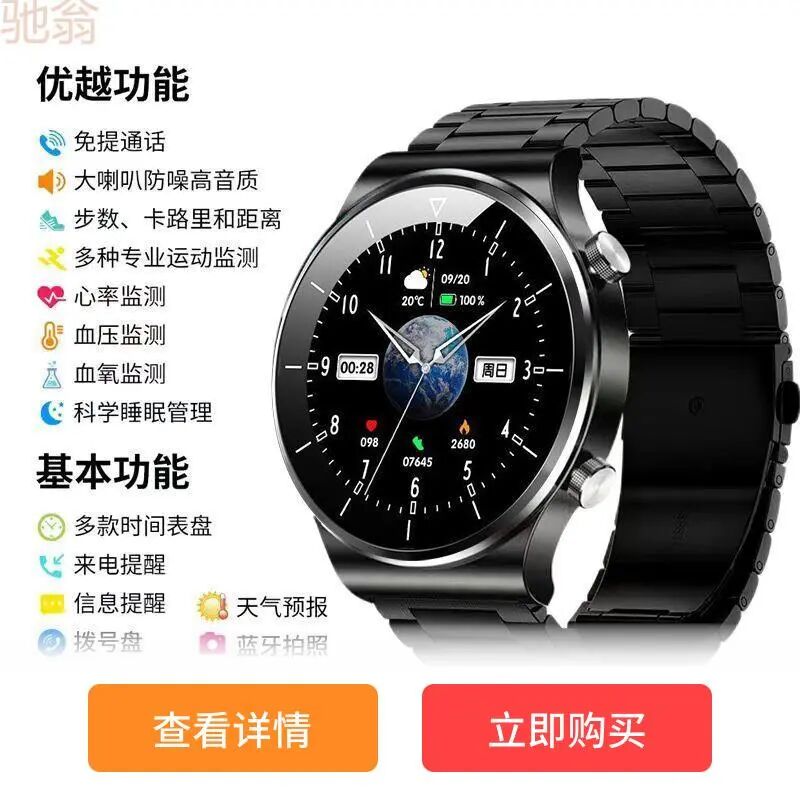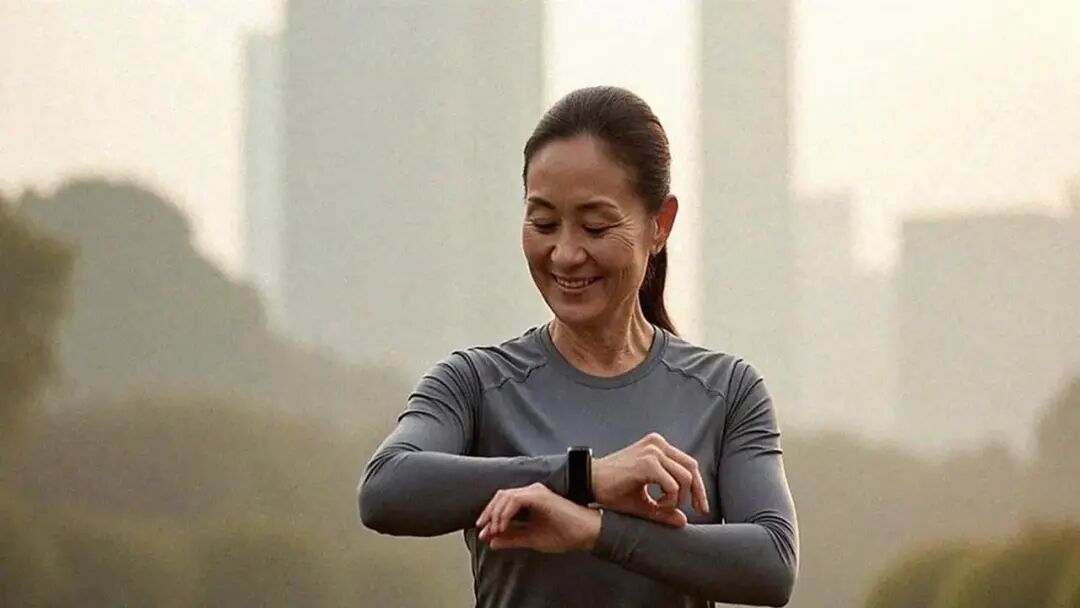In the early morning, Uncle Li stood on the balcony stretching and casually put on his newly bought smartwatch. Measuring blood pressure in the morning has become a recent habit of his, and this watch is not an ordinary one; it can accurately measure blood pressure. He heard that many such watches on the market claim to be quite smart, but Uncle Li is a bit confused about how to choose one.
Let’s start with the blood pressure measurement. Common smartwatches generally use two methods: photoplethysmography and oscillometric measurement. The first method simply uses sensors on the back of the watch to measure changes in blood flow speed through light, and then calculates an approximate blood pressure value. Quick, right? The other method involves adding a small airbag in the watch strap that inflates to compress your wrist, mimicking the traditional blood pressure measurement. Honestly, in terms of accuracy, most watches currently still perform slightly better with the second method.

Let’s discuss two typical watches. Watch A uses the photoplethysmography method, which is convenient to wear and can give you a reading anytime without much hassle. For those who work in an office, during lunch breaks, they might want to check if their blood pressure is stable, making it quite suitable. Watch B, on the other hand, requires a more traditional approach, tightening around the wrist like a conventional blood pressure monitor, and you have to stop for a few minutes to inflate and measure, which seems cumbersome. However, after several measurements, it was found that Watch B has a deviation of only 3 mmHg, while Watch A can show a fluctuation of 5 mmHg when feeling anxious. Ah, when emotions fluctuate, the readings can sometimes be unreliable.
Aunt Zhang downstairs, after trying Watch A for a while, mumbled, “It’s convenient to wear, but sometimes when I feel anxious, I doubt its accuracy and have to run home to use the old-fashioned blood pressure monitor to measure again.” On the contrary, Grandpa Li next door feels that at his age, it’s worth being a bit cumbersome to measure blood pressure, and besides, it’s not too uncomfortable to have the wrist tightened for a while. So he thinks buying Watch B is quite suitable. What about you? Can you handle the inflation time when you’re busy? That’s something you need to consider.

As for the price, everyone has a rough idea. Watch A has an average market price of around 1000 yuan, while Watch B is slightly more expensive, close to 1500 yuan. At first glance, it seems there isn’t much difference, but you need to think about changing the strap occasionally and maintenance. Watch A can be used casually, while Watch B requires more careful consideration of the scenario. Some people, especially those who often travel for work, may not really have the time to sit down and measure for a while. At this point, you’ll consider which is more considerate: cost-effectiveness or usability?
Now, let’s shift to different typical user profiles. Young white-collar workers under a lot of stress may not feel any major heart issues yet, so for peace of mind and a general idea, the photoplethysmography method of Watch A is more suitable. Look at those working 996 schedules; it’s already hard for them to find a moment to catch their breath, let alone wait patiently to tighten their wrist. Of course, the elderly at home are different; blood pressure has become a daily “friend” for them, and every time they look at the number, they seek reassurance, so they prefer the oscillometric measurement for more accuracy and stability. Younger people may not mind if the readings are sometimes inaccurate, but for the elderly, even a 1 mmHg difference can make them anxious for a long time.
Let’s look at some actual usage data. A friend conducted a small survey, having people wear different watches and measure their blood pressure three times in the morning and afternoon. Watch A sometimes showed a difference of 4 mmHg, especially after drinking coffee when excitement increased, the data became even more erratic, but Watch B did not have this issue, with pressure differences mostly stable within 2 mmHg. Imagine being nervous before a meeting in the morning; if Watch A gives an inaccurate reading, it can really make you anxious all afternoon. In environments with significant emotional fluctuations, when the heart rate increases, Watch A may not hold up.

Here’s a small cross-domain analogy. When drinking tea, the first brew is light and the second brew is strong; everyone has different taste preferences. Some people love light tea, enjoying its refreshing taste, while others can’t stand it, feeling it lacks strength. Choosing a blood pressure monitor is somewhat similar. If you want to measure in a relaxed mood without requiring precise data, then the photoplethysmography method is the way to go for its lightness; conversely, if you prefer strong tea, you wouldn’t want to drink light tea every day. If you love precision, you need to do detailed work, even if it means tightening your wrist several times.
As for expenses, let’s assume that over a year, the consumables and maintenance for Watch A can be managed for almost 100 yuan, while Watch B requires additional costs of a few hundred yuan each year for changing air bags and maintaining the cushion’s durability. Plus, if you occasionally measure inaccurately, you might still need to calibrate with a traditional blood pressure monitor, which adds to the small costs.
That’s about it. Wang Ermazi, a 996 IT guy, finds the pressure from the airbag even more stressful, so being able to quickly measure basic heart rate with Watch A is good enough; while at home, parents and elderly people using Watch B can take the opportunity to measure blood pressure after meals while lying down, and take a nap for a few minutes, making it a pleasant experience. In any case, different paths lead to different results, so it depends on which “teahouse” you find yourself in and which flavor suits you best. (Ending with a humorous note) This is a small thought for those who are concerned about their health.